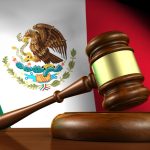September 19 () –
Lavas from volcanic hotspots, whether they erupt in Hawaii, Samoa or Iceland, are likely They originate from a uniform, global deposit in the Earth’s mantle.
The findings of a new assessment published in Nature Geoscience indicate that the Earth’s mantle is much more chemically homogeneous than scientists previously believed, and that Lavas only acquire their distinctive chemical ‘flavors’ on the way to the surface.
“The discovery literally changes our view of hot spot and mantle lavas,” he said. in a statement Dr. Matthijs Smit, associate professor in the Department of Earth, Ocean and Atmospheric Sciences at the University of British Columbia. “In a way, Earth’s lavas are very similar to humanity itself“a wonderfully diverse population with a common ancestor, which developed differently wherever it went.”
Research into the Earth’s mantle has been complicated by the fact that it cannot be sampled directly. Instead, scientists have to engage in a bit of geoscientific research work; researchers study this important part of our planet by analyzing isotopes and trace elements from lava that comes from the mantle and erupts from oceanic volcanoes around the world.
The enormous differences in the composition of these lavas, together with the assumption that the isotopic composition of the magma does not change between its origin and the surface, have led to the general view that the mantle contains distinct deposits of different ages, located in different regions and formed by different processes.
Observations by Dr Smit and co-author Dr Kooijman from the Department of Geosciences at the Swedish Museum of Natural History indicate that the reality may be quite different.
“By looking at a specific set of elements, we were able to discern the chemical effects of various processes acting on the molten magma on its way to the surface and discover that all hotspot lavas actually share the same initial composition,” said Dr. Smit. “Lavas just come out differently because magmas interact with different types of rocks as they rise.”
The Earth’s mantle is a boiling layer of molten and semi-molten material comprising about 84% of the planet’s volume, located between the iron core and the surface crust. When magma derived from the mantle penetrates the crust and erupts at the surface, it is called lava.
Knowing what the mantle is made of is critical to understanding how our planet formed and how the mantle has developed over time. It can also provide clues as to why the mantle behaves the way it does, how it drives plate tectonics and what its role is in the global cycle of elements.
In addition to shedding entirely new light on hotspot lavas in oceanic parts of the world, the analysis also revealed an exciting new link to basaltic lavas on the continents. These melts, which contain diamond-bearing kimberlites, are fundamentally different from magmas found in oceanic hotspots. However, they prove to have the same magma “ancestor”.
“The discovery is a turning point in terms of models of Earth’s chemical evolution and the way we analyse global element cycles,” said Dr Smit. “Not only is the mantle much more homogeneous than previously thought, it probably no longer contains ‘primordial reservoirs’ – entities that were previously needed to explain the data, but which could never really be reconciled with the concept of mantle convection.”
“This model explains the observations in a simple way and allows for a wealth of new hypotheses for global geochemical research in the future,” said Dr. Kooijman.



![[Img #73861]](https://thelatestnews.world/wp-content/uploads/2024/09/Dark-matter-near-Mars-150x150.jpg)









Add Comment